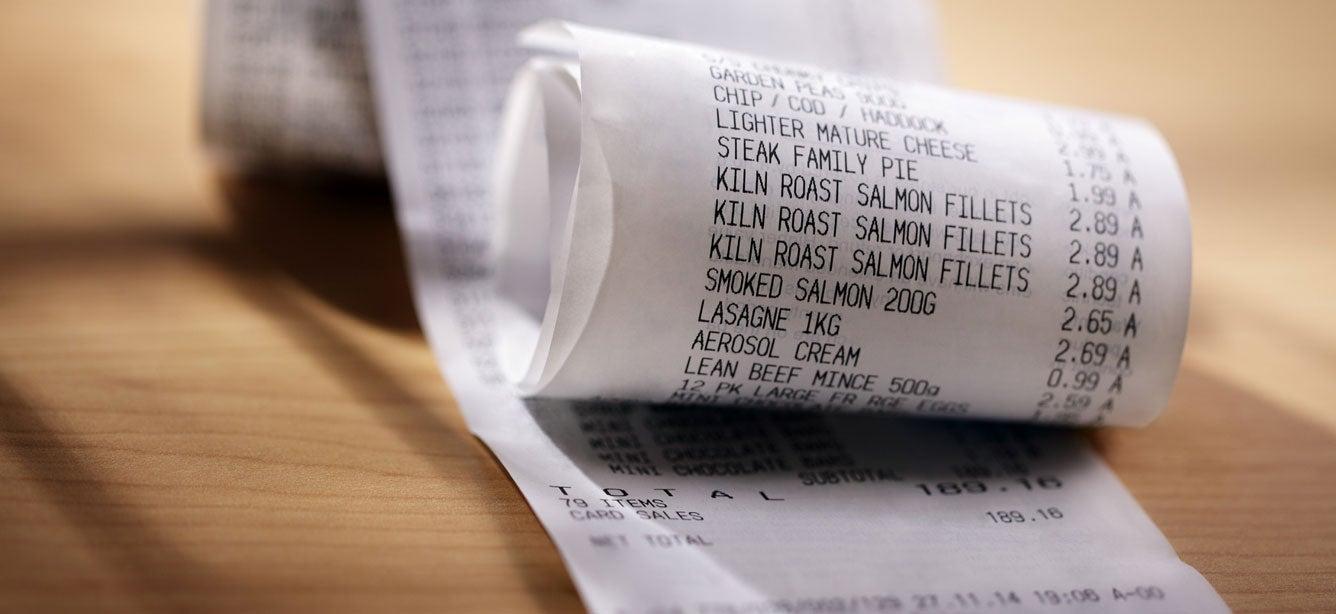
Related Topics
Have you ever wanted—or needed—to reduce your monthly expenses? If so, you may relate to Ms. W’s story.
Ms. W lives alone and worries constantly about how she will continue to make ends meet—especially at a time when inflation threatens to outpace her income and savings. “The groceries are going up so high, my rent is going up, and although I have some funds in reserve, they’re starting to dwindle,” explained this 93-year-old resident of Colorado City, Colorado. “I mean, it’s just me, I don’t get any help from anyone.”
Like most older Americans, Ms. W also faces health care costs not covered by Medicare. A nationwide survey from the John A. Hartford Foundation showed that older adults are more worried about health care costs than inflation, living expenses, tax increases, and the threat of a recession. Only 16% reported being satisfied with their out-of-pocket health care costs.1
“Taken together, the basic costs of daily living are impacting Ms. W’s financial security and her ability to continue aging in place,” said Jessica Johnston, NCOA's Senior Director for the Center for Economic Well-Being.
And her situation reminds us that as we live longer, our savings need to last longer, too.”
That’s why setting up a budget—one that includes specific savings goals and a plan for achieving them—is an essential practice for every older adult, Johnston stressed. Still, even when you have strong money management skills and a nest egg too, factors outside your control, such as sudden rent increases, can change at any time. And that can mean bad news for your bottom line.
If you need to find more room in your budget, and earning additional income isn’t an option, cutting your expenses is a good place to start. Even better, you don’t have to wait until you’re faced with a financial crisis to do it. When you proactively reduce your spending on things you want, but don’t actually need, you can put more money into your savings each month.
Ready to cut your expenses? Start by knowing what they are.
This may sound obvious. But, according to Johnston, many people truly don’t understand how much they spend, or even what they spend it on. Finding your baseline is a necessary first step toward making the changes you need to.
For example: think of something you might do every day that costs money. Perhaps you like to visit your favorite coffee shop in the morning or rent a new release after dinner. Paying a few dollars at a time for each cup of coffee, or movie, may not feel very extravagant. But when you add it all up at the end of the month, you might be unpleasantly surprised.
“There’s something powerful about seeing the numbers in black and white,” Johnston explained. “Getting them out of your head and onto paper lends a clarity to your financial situation that you otherwise might not have.”
Set some time aside to go through your check register, bank statements, and other financial records and list out everything you spend your money on. This includes your monthly fixed expenses, such as your mortgage or rent; your flexible expenses, such as groceries; and your discretionary expenses, such as entertainment and gifts. Johnston recommends gathering this information for at least the previous three months. This will help you identify trends—like unbudgeted daily splurges, or a creeping telephone bill—and take steps to address them if needed.
If you use online banking, you can save time and effort by running built-in reports of your income and expenses by category. If not, consider creating a budget calendar for easier visibility into your finances moving forward.
And remember: when it’s time to slash your spending, it helps to frame the activity in positive terms. “You’re empowering yourself to take better control of your money and maintain your financial stability,” said Johnston. “And that can feel really good.”
6 easy ways to reduce your expenses right now
1. Cut your cable or streaming channels
This doesn’t mean getting rid of the TV you love entirely. But it does mean taking a hard look at your plan and figuring out where you might be able to save some money.
Nowadays, most cable providers bundle your television channels, internet connection, and sometimes even your home telephone service. Many streaming providers like Hulu and Disney are also partnering to offer discounted service bundles. Start by asking yourself:
- Do I watch all of these channels?
- Do I require this internet speed?
- Do I need a land line?
If you answered “no” to any of these questions, you may be able to lower your monthly bill by choosing a different level of service, cancelling streaming subscriptions, or eliminating your home phone. And even if you answered “yes,” you still might succeed in saving money. Big-name companies notoriously compete for business. If you have the time and motivation to shop around, you might uncover a better deal. Your current provider may even offer to match a lower price if you find one elsewhere.
✅ Good to know: Most major cable companies offer a senior discount of up to 10%, so it pays to inquire with yours.
2. Moderate your meals
This does not mean skipping breakfast, lunch, or dinner. It does mean re-evaluating how much you pay for restaurants and takeout.
According to the Bureau of Labor Statistics, U.S residents spend, on average, about $3,933 dollars each year on food away from home.2 That’s as much as $328 per month! Shopping for ingredients and making meals in your own kitchen might feel less convenient—but the benefits to your wallet can be significant.
If it’s hard for you to get to a grocery store and your income is limited, you might consider Meals on Wheels—a low-cost (and often free) alternative to restaurant delivery that’s available in virtually every community throughout the United States. To find a program near you, enter your ZIP code into NCOA’s BenefitsCheckUp. There, you can also explore a variety of other food and nutrition benefits that can help you eat well so you can age well.
✅ Good to know: There are many different ways you can save money on grocery delivery, too, including senior discounts and coupons.
3. Prune your premiums
If you have a car, it pays to compare insurance plans. Many companies offer lower rates for older cars, discounts for clean driving records, and incentives for low mileage, safe habits, and more.
If you own your home, be sure to ask about discounts for safety improvements such as upgraded electrical systems, smoke and carbon monoxide detectors, and alarm systems.
In both cases, you can lower your monthly costs by choosing a higher deductible plan, if that makes sense for your budget and your level of risk tolerance. And don’t overlook the opportunity to bundle your policies with the same insurer. If offered, this usually translates to cheaper rates for you.
✅ Good to know: While it’s true that car insurance premiums typically start to increase once you reach age 60, many companies do offer discounts for senior drivers, according to insurance.com. Some states even mandate such discounts. Don’t miss out on these potential savings; be sure to ask your insurance carrier.
4. Shrink your subscriptions
Do you still use that professional networking service you joined years ago? Are you still paying for a print magazine you sent once as a holiday gift but that somehow keeps getting charged to your credit card?
These days, many consumer services operate via subscription. This makes it easy to lose track of which ones you have and whether they automatically renew (hint: most of them auto-renew). Review your list of expenses, and your email inbox, for clues about recurring subscriptions you may have forgotten about entirely. Then, go ahead and cancel anything you haven’t used in several months.
“It’s one of the simplest things you can do to save extra money,” Johnston said, “and it’s risk-free because it’s reversible. You can always sign back up.”
✅ Good to know: If you do want to keep your subscriptions, you may have the opportunity to save some cash. Many companies will discount the total cost if you pre-pay for an additional year when you renew, for instance. Check out the fine print on your service contracts to see whether this applies.
5. Slash your cell service
Depending on your plan, you may be able to save on your data, text messaging, and minutes. Ask your carrier about their different tiers of service and if they can help you find one that works best for you. You might even consider joining up with other consumers if you can. Some carriers offer hefty discounts through umbrella “friends and family” plans.
It’s worth checking out prepaid, pay-as-you-go, and discount services, too, which are generally less expensive and don’t require you to commit to a lengthy contract.
✅ Good to know: Most major providers offer special deals on mobile plans for adults 55+, so be sure to ask if yours has one and whether you qualify.
6. Whittle your wants
No one wants to sacrifice buying, or doing, the things they most enjoy. But making that distinction between “nice to have” and “need to have” is huge when it comes to your budget.
“Discretionary expenses are usually the easiest to cut, yet often the hardest to give up,” Johnston said. “Remember your reasons for making these changes and you may be surprised by how little you miss certain things.”
✅ Good to know: Many businesses, from restaurants to even airlines, extend senior discounts if you ask. If you’re not quite ready to give up your daily coffee or movie, you might be able to save some money on it!
Find more ways to put money back in your pocket
Cutting your expenses is one way to boost your budget. Federal and state benefits programs are another, as Ms. W discovered. Today, she is tremendously grateful for the knowledgeable, caring staff at the Colorado Benefits Center, who helped her apply for Supplemental Nutrition Assistance Program (SNAP) assistance.
“Now I actually have funds to allocate to rent and medical bills without worrying how I’m going to pay for groceries,” she said.
Could you qualify for similar assistance? NCOA’s BenefitsCheckUp® is a free online tool that connects millions of older adults to programs that help pay for food, health care, prescription drugs, utilities, transportation, and more. Visit today and enter your ZIP code to discover resources personalized for you.
Sources
1. The John A. Hartford Foundation. Warning From Older Adults: Care for Aging in America Needs Urgent Rethinking. September 17, 2024. Found on the internet at https://www.johnahartford.org/newsroom/view/warning-from-older-adults-care-for-aging-in-america-needs-urgent-rethinking
2. U.S. Bureau of Labor Statistics, Consumer Expenditures Survey 2023. Found on the internet at https://www.bls.gov/opub/reports/consumer-expenditures/2023/





